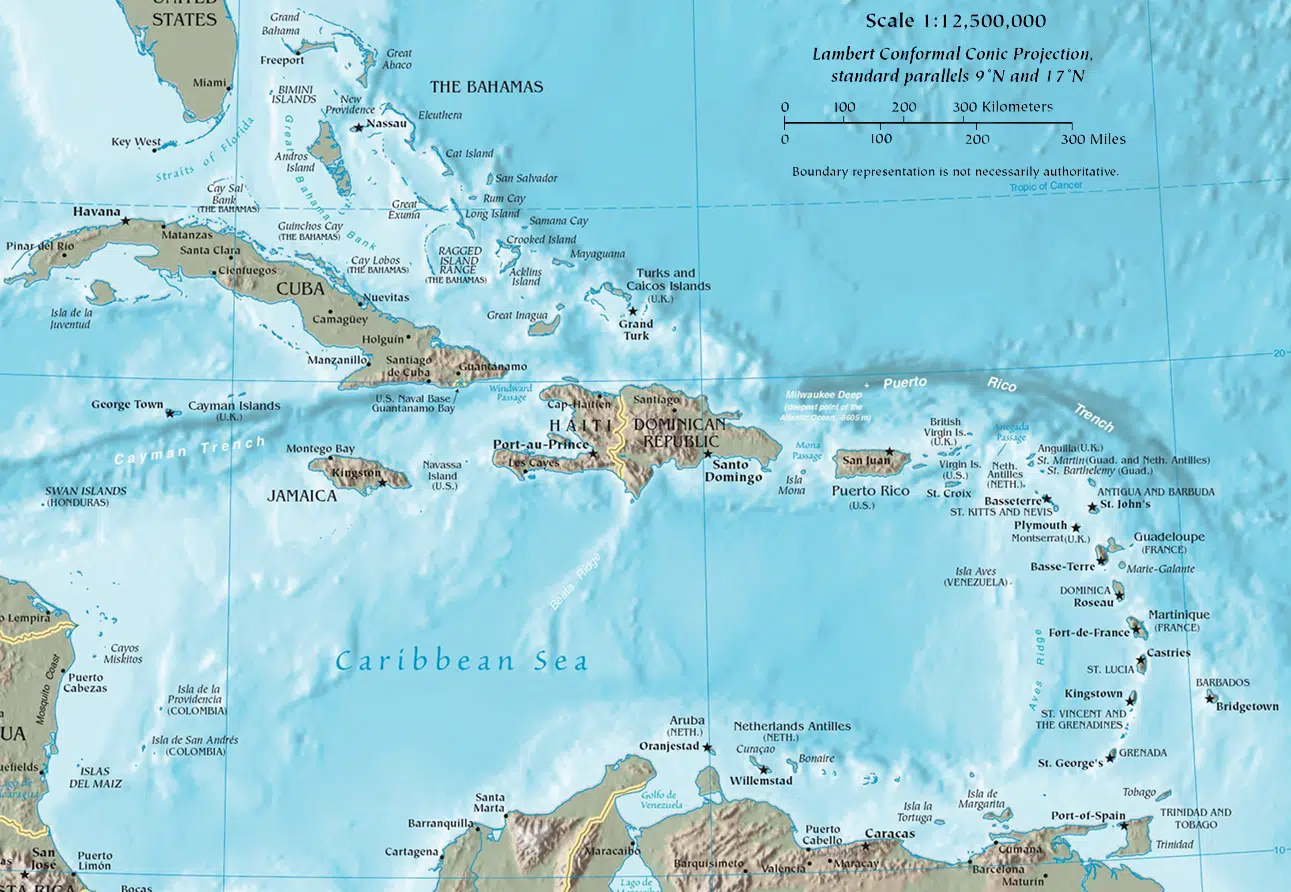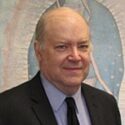What is the Abortion Situation in the Caribbean?

Many have an idealistic view of the islands and the people of the Caribbean, envisioning fancy alcoholic drinks and spotless beaches featuring young men and women with exotic accents lazing around under palm trees.
But step back a couple of hundred yards from those beaches and you will find the real people of the Caribbean: hard-working, generous and friendly despite living in great poverty amid natural resources that would lift up the entire region if not for pervasive corruption and predation by richer nations.
Most significantly, life-and-death struggles over faith, life and family take place behind the scenes, just as they do in all of the developing nations of the world. Even those who live in the Caribbean are largely unaware of the titanic worldwide struggle that directly affects every person who lives there.
Intervention in the Caribbean by Richer Nations
The racist history of the population control movement is well documented, beginning with the Marquis de Sade in the late 18th century and continuing with Margaret Sanger and Marie Stopes in the early 20th century. However, the program really picked up momentum under President Richard Nixon, who famously stated that the people who wanted to legalize abortion were interested in getting rid of the “negro bastards.”1 We can demonstrate that the population control program that began in the early 1970s is still being carried out quite efficiently by examining where its money is being spent.
Since 1990, the population controllers have spent an average of about six dollars per person in South America, Eastern Europe and the Middle East. In Asia, which has nearly two-thirds of the entire world’s population, only four dollars per person has been spent. Compare this to the amounts spent in areas with primarily black populations: $40 per person in Africa, $49 per person in the Caribbean, and $64 per person among the indigenous populations of Oceania.2
It is obvious that the largely black nations have for some time been the primary targets of the population controllers. After all, Africa is largely empty and most of the world’s population is crowded into Asia, so why is ten times as much money spent on each African as on the average Asians?
The 25 nations of the Caribbean now have a total population of 42.5 million people in a land area of 87,700 square miles, for an average density of 485 people per square mile, about the same as the states of New York, Maryland and Delaware.
The average total fertility rates (TFRs) of the Caribbean nations have plunged from 5.01 children per woman in 1965 to 2.01 in 2014, a total of 60%. This means that the number of children being born is not replacing those who perish.3 According to the United Nations, the population of the Caribbean will peak at about 44 million people in 2030 and then will begin to decline, sinking to only about of its current population by the end of this century.
The highest 2014 TFR for the Caribbean is Haiti’s 2.93 children per woman, followed by the Dominican Republic at 2.25. Every one of the other twelve Caribbean nations with a population of more than 100,000 is under replacement level, with the lowest TFR belonging to Communist Cuba at 1.20 children per woman, the lowest in the Americas. Saint Lucia suffered a 74% reduction in TFR during the period 1965-2014, the fastest decline in the region.
Of all of the Caribbean nations, only the Dominican Republic and Haiti have laws that fully protect preborn children. Five nations―Barbados, Cuba, Puerto Rico, St. Lucia and St. Vincent and the Grenadines―have abortion on demand.
Population Control in the Caribbean
The leaders of developing nations in Africa and the Caribbean are learning from bitter experience that the developed nations never do them a favor unless there are thick strings attached.
For example, the leadership and the people of five British overseas territories―British Virgin Islands, Montserrat, the Turks and Caicos Islands, Anguilla and the Cayman Islands―are devoutly Christian and have always strongly rejected homosexuality. So Robin Cook, the British Foreign Secretary, granted citizenship to 150,000 of the citizens of the islands, then waited one year and forced all of the islands to legalize homosexuality, citing Britain’s obligations to the European Convention on Human Rights.4
The same fate befell Aruba, whose population is 80% Roman Catholic. When the Netherlands legalized homosexual “marriage” in 2007, it was automatically legalized in Aruba, which is technically part of the Kingdom of the Netherlands. The outraged leadership of the island objected strenuously, but to no avail, because the opinions of the people mean nothing to liberal functionaries who live thousands of miles from the people with whose lives and values they meddle. Aruba government spokesman Ruben Trapenberg said, “If we accept gay marriage, would we next have to accept Holland’s marijuana bars and euthanasia? They have their culture, we have ours.”
Organizations that promote abortion and homosexuality employ every trick in their quite voluminous book to force their will on developing nations. St. Lucia is a prime example of this principle.
The legalization of abortion was proposed annually in St. Lucia for many years. Just as consistently, the ministers of the island voted unanimously against it. Then in 2005, all but one minister switched their votes, and abortion was completely legalized in the island. The only holdout was Sarah Flood-Beaubrun, who was nine months pregnant at the time and argued passionately for the unborn to her stony-faced colleagues, who then voted for abortion 12-1. Only later did pro-lifers discover that a group of international investors planned to build an abortion tourism hotel in the coastal town of Troumassee in St. Lucia, where rich North American and European women could have a third-trimester abortion and then relax on the beach and recover for a few days. The only trifling detail holding up this moneymaking venture was the pro-life law of the land, and many speculated that a lot of population control money went to the ministers for the purpose of “reconsidering” their abortion votes.5
Although the odds seem overwhelming at times, the courage of the leadership of these small islands sometimes wins out. For example, when Hurricane Ivan deroofed 90% of the buildings in Grenada in 2004, international aid organizations said that they would rush help to the island―but only if the government ended prayer in the schools. Prime Minister Tillman Thomas, backed up by the Roman Catholic and Anglican bishops of the island, refused, and less than 18 months later, Grenada had repaired almost all of the damage without having to compromise its values.6 And, when I visited Port of Spain in Trinidad in 2009, a leader of the Trinidadian Congress said the greatest thing I have ever heard any politician say―and this is an exact quote―“They will have to kill us all before abortion is legalized in Trinidad and Tobago.”
Of the dozens of examples of deadly and repulsive pro-abortion activities, nothing beats the Institute for Regenerative Medicine in Barbados. In 2005, my wife Kathy and I visited the IRM posing as rich American tourists. A Ukrainian proctologist, Yuliy Baltaytis, founded and operated the IRM, whose minimally-trained medical personnel injected liquefied fetal and even newborn organs into rich American and British tourists, with the promise that they could cure any disease or infirmity from obesity to AIDS. Vadym Lazaryev and fellow Ukrainian doctor Vladymyr Ischenko had discovered that hundreds of newborn babies had been stolen from mothers in Kiev hospitals, then had been killed and ransacked for their organs. These organs were then frozen and shipped to several clinics, including the IRM, which injected them into clients for a flat fee of $25,000.
The BBC exposed the IRM in a 2006 program entitled “The Stem-Cell Swindle,” and Baltaytis packed up and left town, only to set up shop in Hungary.7
Final Thoughts
There are a dozen major pro-abortion groups tirelessly working to bypass the wills of both the people of the Caribbean and their leadership in their relentless drive to legalize abortion at any cost and by any means. These groups get nearly all of their funding from developed nations such as Great Britain and the USA, employing all of the tactics they use elsewhere in the world: lying about the frequency of illegal abortion and resulting deaths, corrupting the media so that the pro-life message is stifled, and outright coercion and blackmail.
But there is hope, despite the fact that pro-lifers are outmanned and outspent a thousand to one. The constant repulsive and dishonorable behavior of the population controllers and the pro-abortionists is waking the people up far more effectively than any amount of pro-life campaigning. As a result, we see powerful resistance arising all over the world, from both the grassroots and the leadership of many nations.
And this is an unbeatable pro-life combination.
Endnotes
[1] On March 30, 1972, President Richard Nixon said, “I think a majority of people in Michigan are for abortion, I think in both cases, well, certainly in Michigan, they will vote for it because they think what’s going to be aborted generally are the little Black bastards” [White House Tape 697/29 (March 30, 1972)]. A few days later, on April 3, 1972, he said, “As I told you―we talked about it earlier―that a hell of a lot of people want to control the negro bastards. You know what we are talking about―population control” [White House Tape 700/10 (April 3, 1972)].
On January 23, 1973, the day after the Roe v. Wade decision, Nixon also said, “I know that there are times when abortions are necessary. I know that, when you have a black and a white.… Look, the people in what we call “our class” control their populations. People who don’t control their families are people who shouldn’t have kids.”
[2] For references and calculations, see Excel Spreadsheet F-18-B, “Population Control Expenditures in the Regions and the Nations of the World, 1991-2013.”
[3] All demographic information on the Caribbean is from the United Nations Department of Economic and Social Affairs Population Division’s Population Information Network (POPIN). The low variant is used in all cases, because this is the most historically accurate of all of the United Nations population forecasts.
[4] Dipesh Gadher. “Islands Told to End Gay Sex Ban.” The Sunday Times, November 12, 2000.
[5] Five visits by Brian Clowes to St. Lucia, 2002 to 2010, and interviews with numerous people, including Minister Sarah Flood-Beaubrun and Father Linus Clovis. Fortunately, due to the economic downturn, plans for the hotel were cancelled in 2007.
[6] Brian Clowes’ conversations with Prime Minister Tillman Thomas and Vincent Matthew Darius, O.P., Roman Catholic Bishop of the Diocese of St. George’s in Grenada, July 3 and 4, 2009.
[7] For detailed documentation and a report on the Institute for Regenerative Medicine, e-mail Brian Clowes at bclowes@hli.org and ask for the report “The Eastern European Biological Chamber of Horrors.”
Did you find this useful?
Dr. Brian Clowes has been HLI’s director of research since 1995 and is one of the most accomplished and respected intellectuals in the international pro-life movement. Best known as author of the most exhaustive pro-life informational resource volume The Facts of Life, and for his Pro-Life Basic Training Course, Brian is the author of nine books and over 500 scholarly and popular articles, and has traveled to 70 countries on six continents as a pro-life speaker, educator and trainer.






